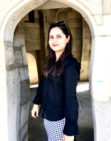In the summer of 2016, I was invited by a television network in Pakistan to speak about Islamic mysticism. As I waited at the set for the program to begin, I noticed last minute preparations being underway—mics getting tested, last dabs of make-up being applied, and final instructions heralded out. As we were about to go live, a wiry young man, garbed in a wrinkled blue shirt and khaki trousers, rushed to the set and signaled us to stop. He said something to the anchors in a muffled, low tone and suddenly a silence overtook the set. I could see color completely drain from the anchors’ faces. They looked at each other in shock for a brief moment and then in a shaken, faint voice, one of them managed to utter ‘Amjad Sabri has been assassinated’ with a bland expression shrouding her face.
In the summer of 2016, Amjad Sabri was brutally murdered in the middle of the night as he returned from a Qawwali performance. Amjad Sabri was one of the most renowned Qawwals from Pakistan. While the exact reasons for his assassination are still debated—with some groups claiming personal rivalry as a cause—the majority understood his assassination as a reaction stemming from an extremist party’s long-standing attack on Qawwali, which they deem as ‘un-Islamic’ and heretical due to Qawwali exhibiting a deep reverence towards Prophet Muhammad’s companion Ali and various Islamic mystics. Despite this, and numerous other incidences involving attacks on Sufi sites in Pakistan, Qawwali has not only survived but witnessed a continuous rise in Pakistan. The project explores why this 700-year-old tradition perseveres, and remains meaningful to people, despite the challenges and critiques presented to it by the rising Wahhabi and Salafi groups in Pakistan.
Qawwali is a South Asian form of music, which is closely linked with Islamic mysticism (tasawwuf), the esoteric dimension of Islam, and thereby draws from Sufi poetry. It is an ecstatic expression of devotion to God, with lyrics imbued with themes of love, longing, and union with God. It can be heard at tombs, mausoleums, cars, and shops, forking its way through the humdrum of life. Thus, the project focused on the everyday, lived experiences of people to probe the significance of Qawwali in the everyday life of a Pakistani. More specifically, the project explores how lyric poetry sung in the form of Qawwali flows through time, moving and morphing the lives of people and spaces. In Pakistan, I interviewed a broad range of people—practitioners and connoisseurs of Qawwali—those who have a zawq* for it. This included Qawwals, businessmen, multi-national brand managers, as well as educators and actors in Pakistan.
The documentary raises questions such as: What about Qawwali moves people? What allows it to move through various social classes and spaces and remain meaningful to diverse groups of people? Qawwali has its origins in the Sufi practice of sama’ or listening to spiritual music in which the seeker might enter a trance-like ecstatic state (hal) and it was usually performed at khaneqahs (Sufi lodges). However, Qawwali in current-day Pakistan has filtered to disparate spaces. Sometimes the enchanting lyrics fill the air at tombs and mausoleums and at other times can be heard at a gym during a yoga class. More recently, Qawwali has made its way to weddings and high-end music platforms as well. Thus, the documentary investigates the socio-cultural and religious factors that may have led to Qawwali’s evolvement into the current day form that we see today.
*Zawq is a Persian term that means taste, temperament, or relishing.
Additional Resources
Alaghband-Zadeh, Chloë. “Listening to North Indian Classical Music: How Embodied Ways of Listening Perform Imagined Histories and Social Class.” Ethnomusicology 61, no. 2 (2017): 207–33.
Aquil, Raziuddin. “Music and Related Practices in Chishti Sufìsm: Celebrations and Contestations.” Social Scientist 40, no. 3/4 (2012): 17–32.
Celestini, Federico, and Philip V. Bohlman. “Editorial: Musicology and the Discourses of Global Exchange.” Acta Musicologica 86, no. 1 (2014): 1–3.
Huda, Qamar-ul. “Khwaja mu’in ud-din Chisti’s death festival: Competing authorities over sacred space.” Journal of Ritual Studies 17, no. 1 (2003): 61–78.
Jones, L. JaFran. Review of Review of Sufi Music of India and Pakistan.: Sound, Context and Meaning in Qawwali, by Regula Qureshi. Asian Music 21, no. 2 (1990): 151–55.
Küçük, Hülya. “A Brief History of Western Sufism.” Asian Journal of Social Science 36, no. 2 (2008): 292–320.
Kugle, Scott. “Qawwālī Between Written Poem and Sung Lyric, Or . . . How a Ghazal Lives.” The Muslim World 97, no. 4 (n.d.): 571–610.
Manuel, Peter. “The Intermediate Sphere in North Indian Music Culture: Between and Beyond ‘Folk’ and ‘Classical.’” Ethnomusicology 59, no. 1 (2015): 82–115.
Parveen, Babli. “The Eclectic Spirit of Sufism in India: An Appraisal.” Social Scientist 42, no. 11/12 (2014): 39–46.
Qureshi, Regula. “‘Muslim Devotional’: Popular Religious Music and Muslim Identity under British, Indian and Pakistani Hegemony.” Asian Music 24, no. 1 (1992): 111–21.
Qureshi, Regula, and Regula Burckhardt Qureshi. Sufi Music of India and Pakistan: Sound, Context and Meaning in Qawwali. CUP Archive, 1986.
Ruskin, Jesse D., and Timothy Rice. “The Individual in Musical Ethnography.” Ethnomusicology 56, no. 2 (2012): 299–327.
Saeed, Yousuf. “Fled Is That Music.” India International Centre Quarterly 35, no. 3/4 (2008): 238–49.
Wolf, Richard K. “The Musical Lives of Texts: Rhythms and Communal Relationships among the Nizamis and Some of Their Neighbours in South and West Asia.” In Tellings and Texts, edited by Francesca Orsini and Katherine Butler Schofield, 1st ed., 445–84. Music, Literature and Performance in North India. Open Book Publishers, 2015.
———. “The Poetics of ‘Sufi’ Practice: Drumming, Dancing, and Complex Agency at Madho Lāl Husain (And Beyond).” American Ethnologist 33, no. 2 (2006): 246–68.
Additional Credits
I’d like to acknowledge the following guest contributors:
Aneeqa Wattoo is a Teaching Fellow at the Lahore University of Management Sciences. She did her MPhil in Modern South Asian Studies from the University of Oxford and her research focuses on twentieth-century women’s writing in Urdu in the late colonial period, particularly the writing of Ismat Chughtai.
Aimon Bashir is the current Brand Manager of Nescafe, Nestle Pakistan. She previously led Nescafe Basement, a music platform by Nestle that aims at promoting Qawwali in Pakistan.
Bina Jawwad is a renowned actor and educator in Pakistan. She practices and teaches Kathak dance and founded Harsukh school in the suburbs of Lahore. The school aims at promoting traditional arts and crafts to underprivileged groups and minorities in Pakistan. They hold weekly Qawwali gatherings at Harsukh.
Ghulam Shabbir is the official Qawwal at Baha al-din Zakariyya’s tomb in Multan, appointed by Auqaf and Religious Affairs. Shabbir’s forefathers moved from India to Pakistan at the time of Partition, and since then his family has been serving and performing at tombs (mazars).
Mishal Shah is the Program Co-Ordinator at Akhuwat, a non-profit organization that aims at fostering the equitable distribution of wealth in Pakistan. Previously, she focused on South Asian Studies at the University of Wisconsin-Madison.
Tabinda Mazhar is the Manager of Professional Development at Cambridge International Pakistan. She received her Master’s in Public Policy from Cambridge University.
Taimoor Khan Mumtaz is a renowned Architect and Educator. He founded Hast o Neest Institute which seeks to provide education in traditional arts and crafts, including music, Islamic calligraphy, miniature painting, and Arabic and Persian language.
Sauran is a businessman and director of Impex International in Pakistan.
Get Involved
Learn about forthcoming podcast episodes, newly published projects, research opportunities, public events, and more.
Potential Students




